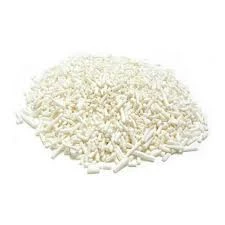
acidulant in food
The Role of Acidulants in Food Enhancing Flavor, Preservation, and Safety
Acidulants are substances added to food to provide a sour taste, enhance flavor, and improve preservation. They play a crucial role in the food industry, contributing to the safety, quality, and overall appeal of various products. This article will explore the primary functions of acidulants, their common sources, and their significance in food processing and consumer products.
Functions of Acidulants
One of the main functions of acidulants is to provide acidity, which can significantly alter the flavor profile of food products. By adding acidic elements to foods, manufacturers can create a more balanced taste experience. For example, in products like salad dressings, sauces, and marinades, vinegar and citric acid serve to enhance the flavors of other ingredients. The sourness from acidulants can counteract sweetness, making dishes more complex and appealing.
In addition to flavor enhancement, acidulants play a critical role in food preservation. Many microorganisms thrive in neutral pH environments, leading to spoilage and foodborne illnesses. By lowering the pH of food, acidulants inhibit the growth of harmful bacteria and molds. This is particularly important in products such as pickles, jams, and fermented foods, where acidification is a key factor in maintaining shelf stability and safety.
Another vital function of acidulants is their contribution to the texture and quality of food. In products like cheese, yogurt, and certain baked goods, acids are involved in the coagulation and gelation processes. They are essential for achieving the desired consistency and preventing undesirable textures in various food applications.
Common Sources of Acidulants
acidulant in food

Acidulants can be derived from both natural and synthetic sources. Natural acidulants include citric acid, which is commonly found in citrus fruits; acetic acid, the key component in vinegar; and lactic acid, produced during fermentation. These natural sources are often preferred by consumers seeking clean-label products with recognizable ingredients.
On the other hand, synthetic acidulants, such as phosphoric acid and malic acid, are widely used in the food industry for their cost-effectiveness and stability. They are often found in soft drinks, candies, and processed foods. The choice between natural and synthetic acidulants can depend on factors like product formulation, target market, and regulatory considerations.
Significance in Food Processing
The use of acidulants in food processing is not only a matter of taste but also of safety and stability. As consumer awareness around food safety continues to rise, the demand for products that contain acidulants is increasing. Manufacturers are now focusing on optimizing acid levels to ensure that their products are both flavorful and safe to eat.
Moreover, with the growing trend toward healthier eating, acidulants offer a unique advantage. By enhancing flavors, they allow for the reduction of added sugars and salt in many recipes, catering to consumers looking for healthier options without sacrificing taste. This shift is particularly relevant in the production of snacks and convenience foods, where consumers seek better nutritional profiles.
Conclusion
Acidulants are integral to the food industry, serving to enhance flavor, preserve food safety, and improve texture. Whether derived from natural or synthetic sources, their applications span a wide range of products. As the industry evolves with consumer preferences for healthier, safer food options, the importance of acidulants is likely to continue growing. Understanding their role can help consumers make informed choices about the foods they eat, while also appreciating the complexities involved in food production.
-
Buy High-Quality Trichloroisocyanuric Acid for Sale | TCCA 90% SupplierNewsAug.30,2025
-
Pure Sodium Dichloroisocyanurate Dihydrate | Powerful DisinfectantNewsAug.29,2025
-
Industrial Chemicals: Quality & Purity for Every IndustryNewsAug.28,2025
-
Nitrile Rubber Honoring Strict Production StandardsNewsAug.22,2025
-
Aspartame Ingredients Honoring Food Safety ValuesNewsAug.22,2025
-
Fertilizer for Balanced Plant NutritionNewsAug.22,2025
-
Cyanide Gold Processing with High Purity AdditivesNewsAug.22,2025
Hebei Tenger Chemical Technology Co., Ltd. focuses on the chemical industry and is committed to the export service of chemical raw materials.
-

view more DiethanolisopropanolamineIn the ever-growing field of chemical solutions, diethanolisopropanolamine (DEIPA) stands out as a versatile and important compound. Due to its unique chemical structure and properties, DEIPA is of interest to various industries including construction, personal care, and agriculture. -

view more TriisopropanolamineTriisopropanolamine (TIPA) alkanol amine substance, is a kind of alcohol amine compound with amino and alcohol hydroxyl, and because of its molecules contains both amino and hydroxyl. -

view more Tetramethyl Thiuram DisulfideTetramethyl thiuram disulfide, also known as TMTD, is a white to light-yellow powder with a distinct sulfur-like odor. It is soluble in organic solvents such as benzene, acetone, and ethyl acetate, making it highly versatile for use in different formulations. TMTD is known for its excellent vulcanization acceleration properties, which makes it a key ingredient in the production of rubber products. Additionally, it acts as an effective fungicide and bactericide, making it valuable in agricultural applications. Its high purity and stability ensure consistent performance, making it a preferred choice for manufacturers across various industries.





